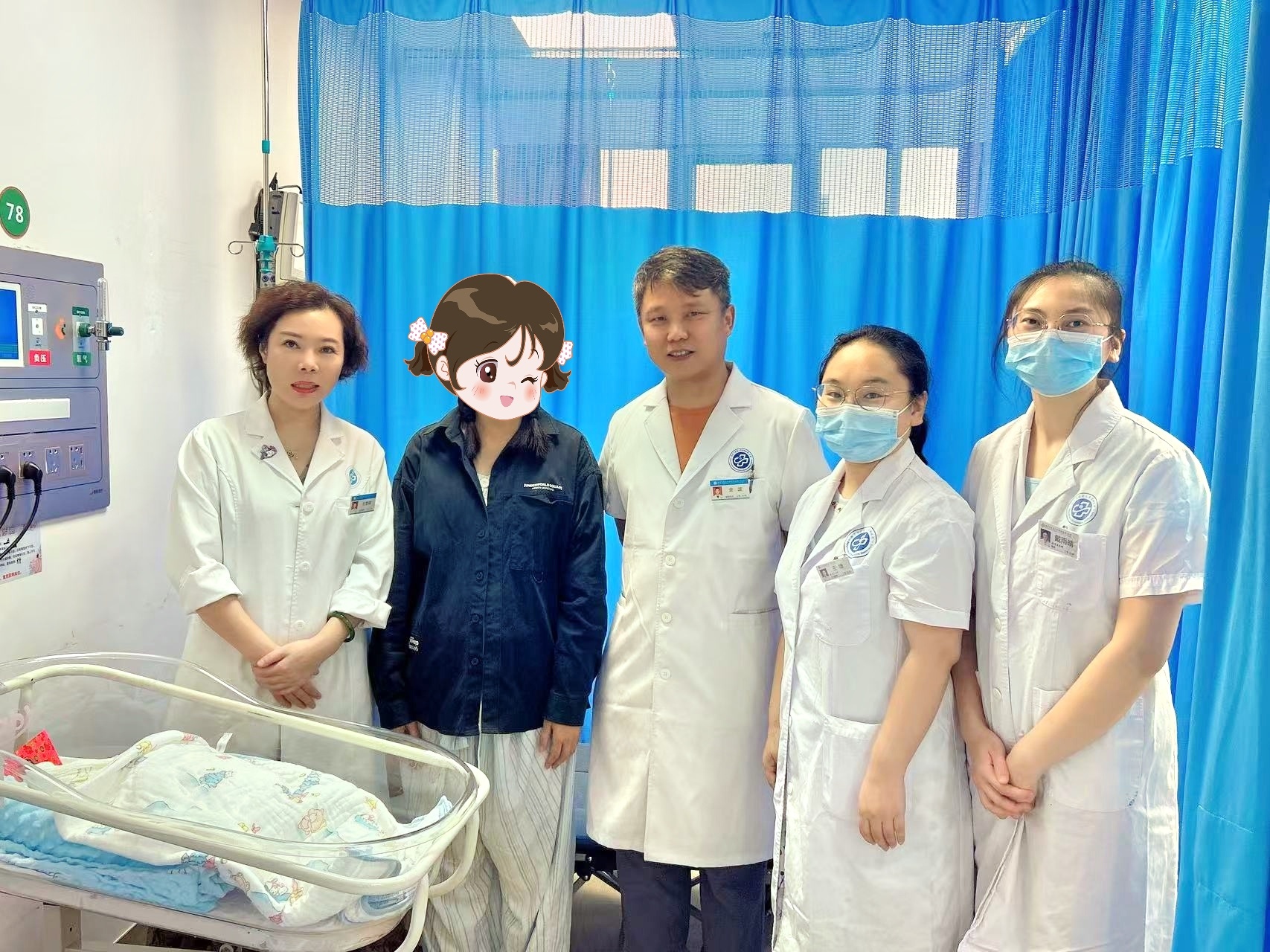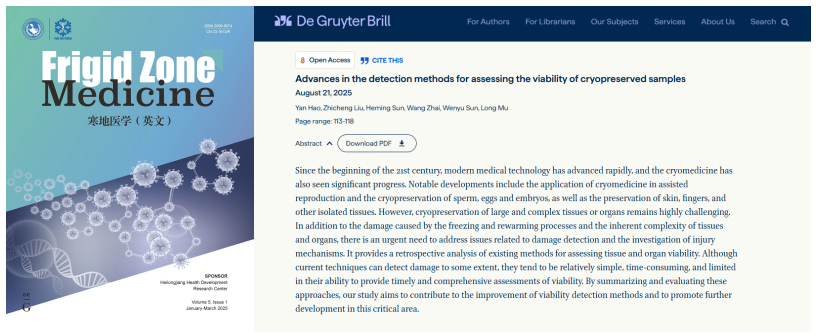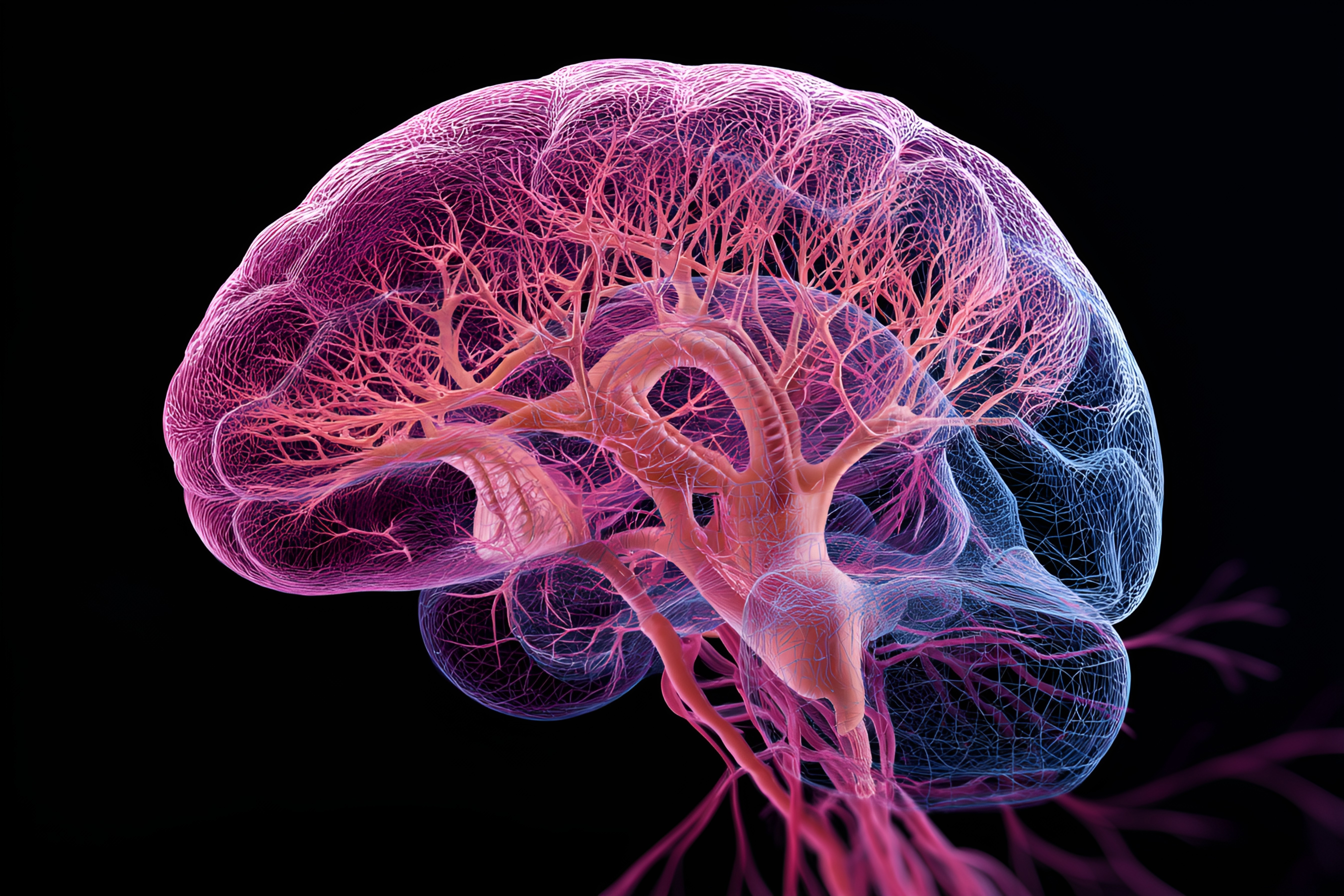Good News! Three Organoid Cryopreservation Technologies of Our Team Accepted for National Patents
Release time:
2025-08-15
In the era of rapid development of organoid research, achieving long - term stable preservation while maintaining biological activity and functional integrity remains a crucial bottleneck restricting the clinical translation of this technology and its application in drug R & D. Recently, three technological inventions by the research team of Yinfeng Low - Temperature Medical Research Center were accepted by the National Intellectual Property Administration. These three technologies focus on the challenges of organoid cryopreservation and cover the key steps in the entire process of organoid vitrification preservation, offering a more efficient and reliable solution for safeguarding biological samples in organoid research.
[Patent 1] A Raman - Spectroscopy - Monitored Method for Organoid Vitrification Preservation
The core of this invention is a Raman - compatible quartz microfluidic chip, paired with a Raman spectral detection module, a temperature control system (a Raman - compatible hot - cold stage), and a fluid control module. It is an integrated system and optimized method for organoid vitrification preservation, encompassing processes such as cryoprotectant loading, cooling, rewarming, and cryoprotectant removal. The aim is to minimize potential damages during vitrification, including osmotic, toxic, and ice - crystal - related damages, thus enabling high - viability and high - consistency organoid preservation.
[Patent 2] A Method for Vitrification Preservation and Resuscitation of Retinal Organoids
This invention presents an efficient approach for the vitrification preservation and resuscitation of retinal organoids. The research team enhanced the cryoprotectant composition, refined the loading and removal methods, and carefully selected cryopreservation carriers to achieve high - quality preservation of retinal organoids. Compared with existing techniques, this method features a lower vitrification concentration, faster recovery of retinal organoids, and complete preservation of their structural and functional integrity. It enables high - throughput, efficient, and straightforward freezing and resuscitation of retinal organoids to meet application requirements.
[Patent 3] A Static - Magnetic - Field - Assisted Organoid Freezing Device and Organoid Freezing and Thawing Method
Addressing critical issues in current organoid cryopreservation, such as ice - crystal damage, oxidative stress, and loss of function, this invention offers a static - magnetic - field - assisted organoid freezing device and a corresponding freezing and thawing method. It allows for precise magnetic - field regulation and covers the entire cryopreservation - storage - resuscitation process. Notably, an external magnetic - field - generating coil during the thawing phase can effectively inhibit recrystallization during rewarming.
The acceptance of these three patents signifies the further strengthening of our company's technological barriers in the field of organoid cryopreservation. In the future, we will continue to focus on biological sample preservation technology, expedite the transformation of innovative achievements, and provide more reliable sample support for regenerative medicine, drug R & D, and precision medicine.
Previous article
Latest developments
According to the latest announcement from the International Society of Cryobiology, Professor Xu Yi from the School of Health Science and Engineering at the University of Shanghai for Science and Technology, and a member of the Yinfeng Cryomedicine Expert Committee, has been elected as a Board Governor of the Society for a three-year term (2026–2028). The election was conducted through a democratic vote by all members worldwide, with three new Board Governors elected. Professor Xu Yi is the only scholar from Asia elected to the Society’s Board of Governors this time and the third elected scholar from mainland China in the Society’s 60-year history.
The significance of life extension lies not only in technological breakthroughs but also in the shared belief of every individual who believes in "a better future." With faith as their torch, these fellow travelers join hands, pooling their strength to stride forward together. We firmly believe that as this steadfast support converges into a powerful force, it will propel the Yinfeng Life Extension Plan to gain broader attention, inject continuous momentum into the development of cryobiomedicine, and illuminate the next chapter of human civilization.
Over the two days, the symposium was not only a collision of ideas but also seeds sown to advance social progress in life culture. The Shandong Yinfeng Life Science Public Welfare Foundation will continue to use technology as wings and culture as roots, collaborating with all sectors of society to enhance the quality of life for the Chinese people and build a human-centered life care system.
According to recent announcements by the Jinan Municipal Bureau of Science and Technology, 11 outstanding achievements from Jinan have been included in the 2025 "Shandong Outstanding Achievements Report" project. Among them is the globally first-of-its-kind ovarian tissue dual-activation technology developed by Shandong Silver Med Life Science Research Institute (Jinan).
Recently, Frigid Zone Medicine, an authoritative international journal in the field of cryomedicine, published an important review titled "Advances in the Detection Methods for Assessing the Viability of Cryopreserved Samples". Written by the team of Yinfeng Cryomedical Research Center, the article systematically reviews and analyzes various detection techniques currently used to evaluate the viability of cryopreserved cells, tissues, and organs. It also proposes key directions from the perspectives of methodological integration and future instrument development, offering crucial theoretical support and practical guidance for the long - term cryopreservation of complex tissues and organs.












